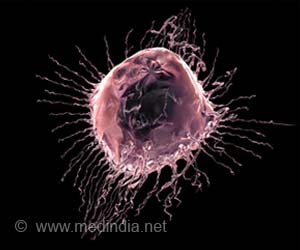Cells can gain the ability to produce green laser light with different spectral composition by swallowing an optical micro-resonator, finds a new study.

The research team led by Professor Malte Gather of the School of Physics and Astronomy, in collaboration with immunologists in the University’s School of Medicine, found that cells gain the ability to produce green laser light, by swallowing an optical micro-resonator.
The spectral composition of the laser light generated by each cell is different and can be used to distinguish and track large numbers of cells over prolonged periods of time.
In their experiment, the researchers demonstrate tagging of a few dozen human white blood cells and then track the cells for a day. The approach, in principle, allows barcoding and reliably distinguishing up to several hundred thousand cells simultaneously.
“This miniaturization paves the way to applying cell lasers as a new tool in biophotonics. In the future, these new lasers can help us understand important processes in biomedicine. For instance, we may be able to track - one by one - a large number of cancer cells as they invade tissue or follow each immune cell migrating to a site of inflammation.” said Dr. Gather.
Dr. Gather also said that the ability to track the movement of large number of cells will widen our understanding of a number of important processes in biology.
Advertisement
Source-Medindia













